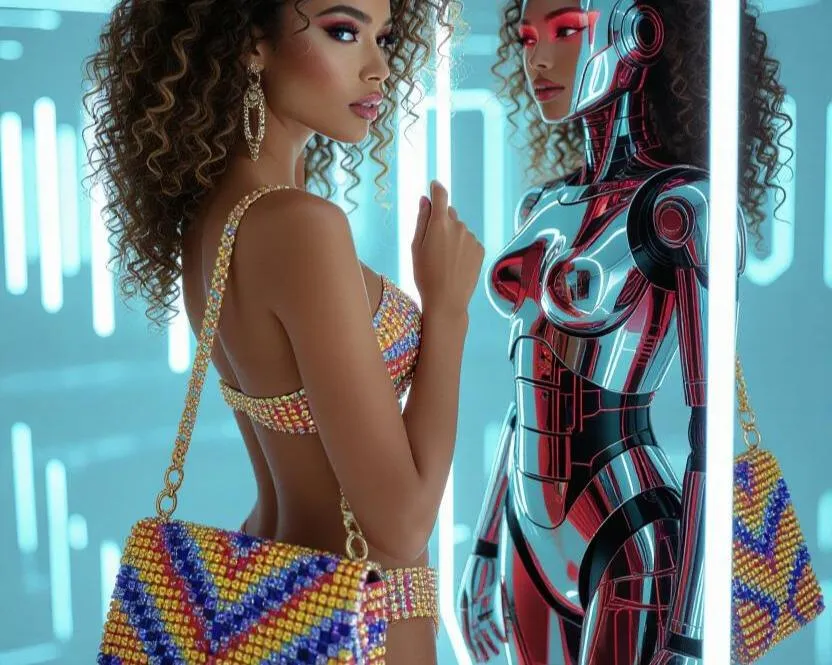
Blockchain's Edge: Bringing True Uniqueness and Transparency to Assets in a World of Distrust
Picture this: You're scrolling through an online marketplace, eyeing a luxury handbag that screams "authentic." But in the back of your mind, that nagging doubt creeps in—is this the real deal or just another knockoff? In 2025, with counterfeit goods costing brands over $500 billion annually, consumer frustration is at an all-time high. Enter blockchain: the tech that's flipping the script on distrust by embedding unbreakable transparency and uniqueness into every asset, turning skeptical shoppers into loyal advocates. As the global blockchain market surges toward $12.1 billion in agriculture alone, this isn't just hype—it's the antidote to a marketplace riddled with fakes and frauds.
Let's dive in. At its core, blockchain is a decentralized ledger that records every transaction or change in an asset's history immutably. No more shady intermediaries or altered records; everything is verifiable in real-time. This transparency tackles the root of consumer distrust head-on. Take counterfeit products: traditional systems rely on paper trails that can be forged, but blockchain assigns each asset a unique digital identity—think of it as a tamper-proof DNA code. For instance, platforms like Tangible are tokenizing art and collectibles, where every painting or watch gets a blockchain record that proves provenance, slashing fraud risks dramatically. In a study on beauty products, blockchain boosted consumer perceptions of quality and trust, directly influencing purchase intentions by making authenticity crystal clear.
Why does this matter now? We're in an era where non-legitimate offerings aren't just annoying—they're eroding brand loyalty. Edelman’s 2025 Trust Barometer reveals that 80% of people trust the brands they use more than institutions like government or media, but only if transparency is proven. Meanwhile, 87% of shoppers are willing to pay more for trusted brands, up from previous years as distrust in opaque supply chains grows. Blockchain steps up by ensuring "real uniqueness"—each asset, whether a physical good or digital token, carries a one-of-a-kind hash that can't be duplicated. This is especially game-changing in saturated markets like fashion or luxury, where performative marketing (remember those "woke" campaigns that backfired?) is giving way to conservative practicality: straightforward proof over flashy claims. Consumers want self-reliance in verifying what they're buying, aligning with cultural shifts toward value-driven decisions amid economic uncertainty.
This trend extends beyond luxury to agritech, where real-world impact is evident. Farmers and brands are using blockchain to authenticate crop origins, like verifying organic certifications for premium produce. Startups such as CropIn integrate it with IoT for traceable supply chains, ensuring that a bag of coffee beans isn't just labeled "fair trade"—it's provably so. This uniqueness empowers brands to stand out: imagine a farm-to-table olive oil where buyers scan a QR code to see the exact harvest date, soil data, and journey, boosting loyalty by up to 40% according to PwC's 2025 consumer trends. Additionally, consider blockchain in dairy traceability, where farmers in regions like Wisconsin use it to certify milk quality, further enhancing consumer trust. It's not about broad ads anymore; it's consent-based, data-backed storytelling that resonates with privacy-conscious users demanding control.
The numbers back this up. Blockchain's role in digital marketing is exploding, with adoption in brand protection expected to reduce counterfeits by identifying unique digital identities on the chain. In retail, it's revolutionizing experiences by cutting fraud through secure, immutable records, with cross-border payments becoming faster and cheaper. And for trust? Morning Consult's 2025 report ranks transparency as a top driver, with 81% of consumers needing it to even consider a purchase. By 2025, blockchain is set to be a cornerstone of brand trust, with tamper-proof tech enabling full lifecycle tracing.
Of course, hurdles exist: integrating blockchain requires overcoming data silos and regulatory tweaks, such as navigating GDPR compliance in the EU. However, initiatives like Web3 marketing trends show it's doable, with AI-powered campaigns enhancing growth. As responsible marketing blends tech with trust in 2025, brands that adopt this will thrive.
So, how could blockchain's transparency redefine uniqueness for your favorite brands? Would you pay extra for an asset with verifiable origins? Drop your thoughts below—let's unpack this shift.
